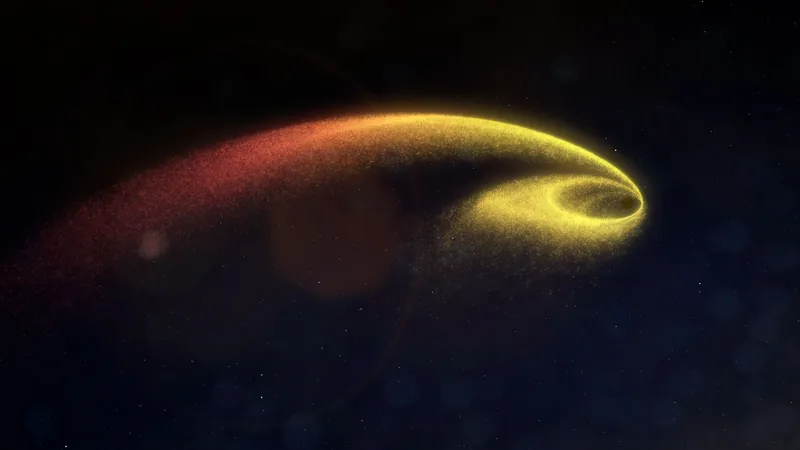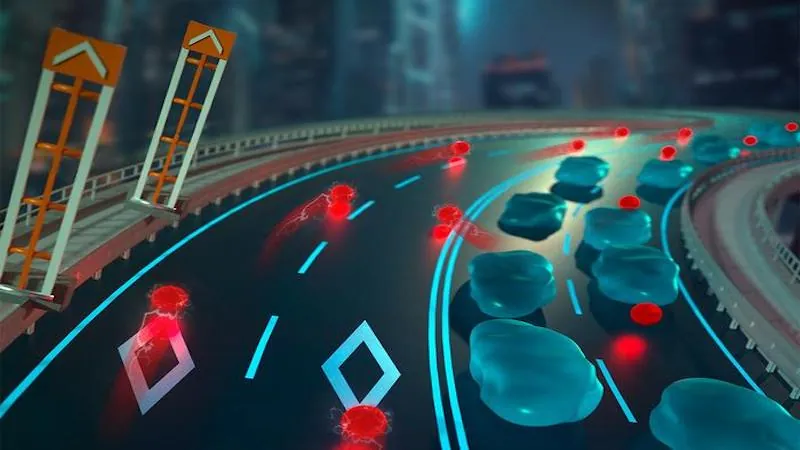
Incredible Discovery: Black Holes Orbiting Sun-Like Stars!
2024-11-20
Author: Wei
Incredible Discovery: Black Holes Orbiting Sun-Like Stars!
In a groundbreaking revelation buried within the extensive Gaia catalog, astronomers have stumbled upon two extraordinary black hole systems that challenge our understanding of celestial dynamics. These black holes, referred to as BH1 and BH2, not only have masses nearly ten times that of our Sun but also have companion stars that closely resemble our own Sun in both characteristics and sizes. This peculiar pairing of sun-like stars orbiting black holes has historically been deemed improbable.
Traditionally, the lifecycle of massive stars coming to the end of their existence is drastic and violent. When a massive star transitions into a black hole, it typically results in one of two scenarios: either the smaller companion star is violently expelled from the system or, more dramatically, it is engulfed by the newly formed black hole. Consequently, finding sun-like stars maintaining stable orbits around black holes is an occurrence we wouldn’t expect.
However, researchers have proposed a fascinating mechanism that might explain this anomaly. Their studies focused on the evolution of exceptionally massive stars, no smaller than 80 solar masses. These colossal stars experience powerful stellar winds as they near the end of their life cycles, ejecting substantial amounts of material into space. This process mitigates the risk of the star expanding to the point that it swallows its smaller companion, allowing the smaller star to survive the cataclysmic transition to black hole status.
Further investigations revealed that this situation might not be as rare as once thought. By analyzing the data, the researchers concluded that if a sun-like star has a sufficiently wide orbit, it can endure the violent aftermath of a massive star’s transformation. The key, they discovered, is the delicate balance of stellar winds: strong enough to temper the larger star’s explosive final moments but gentle enough not to disrupt the smaller companion, leading to an unexpected survival of sun-like stars in these peculiar duos.
The implications of this research are astounding. The team estimates that there could be hundreds of similar systems hidden within the vast data of Gaia, eagerly waiting to be uncovered. This discovery not only enriches our understanding of black hole formation and stellar evolution but also highlights the universe's ability to surprise us endlessly.
As astronomers continue to sift through the astronomical archives, who knows what other cosmic mysteries remain hidden? This observing campaign serves as a potent reminder that there is always more to discover beyond the stars. Are we on the verge of uncovering more celestial surprises? Stay tuned for the latest findings in the ever-evolving field of astronomy!


 Brasil (PT)
Brasil (PT)
 Canada (EN)
Canada (EN)
 Chile (ES)
Chile (ES)
 España (ES)
España (ES)
 France (FR)
France (FR)
 Hong Kong (EN)
Hong Kong (EN)
 Italia (IT)
Italia (IT)
 日本 (JA)
日本 (JA)
 Magyarország (HU)
Magyarország (HU)
 Norge (NO)
Norge (NO)
 Polska (PL)
Polska (PL)
 Schweiz (DE)
Schweiz (DE)
 Singapore (EN)
Singapore (EN)
 Sverige (SV)
Sverige (SV)
 Suomi (FI)
Suomi (FI)
 Türkiye (TR)
Türkiye (TR)